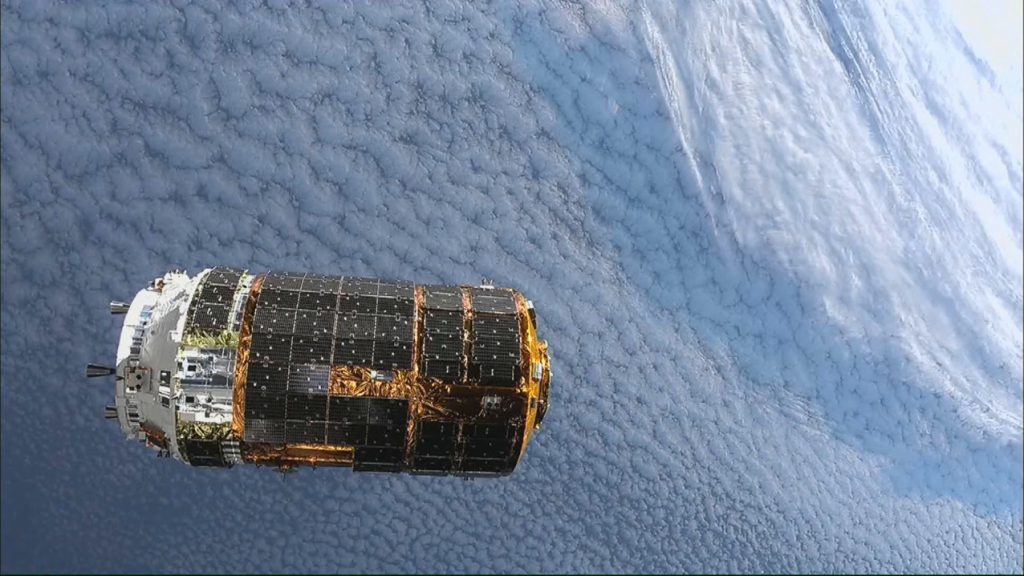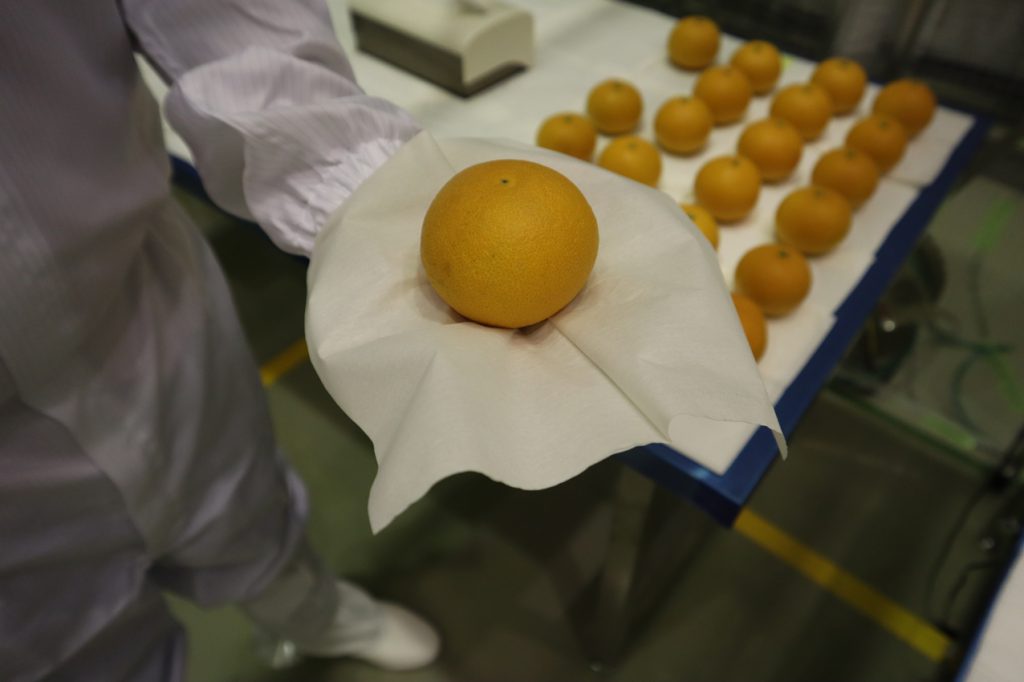Japan’s unmanned “Konotori” No. 9(H-II Transfer Vehicle: HTV) completed its mission on 19,August,2020. It left the ISS (International Space Station) towards the Earth on the next day 20, August, 2020, with the waste from the ISS loaded in it. It was observed that “Konotori” No. 9, which left the ISS around 2:35 am on August 19, entered the atmosphere at 4:07 pm on August 20. Flight time was approximately 37 hours and 32 minutes, and the Kounotori 9 burned out in the atmosphere. That was the final operation of “Kotonotori”.*Date&Times are in Japan-time

“Konotori”, which demonstrated remarkable performance in replenishment of the supply to ISS
“Konotori” No. 9 played an important role in transporting supplies to the ISS along with the American private space transport “Dragon”, after US space shuttle retired.

“Konotori” No. 9 played an important role in transporting supplies to the ISS along with the American private space transport “Dragon”, after US space shuttle retired.
The first unit (HTV1) was launched in 2009, before they started to call it “Konotori”.The “Konotori” flied out into space from the Tanegashima Space Center with Japan’s largest H-IIB Launch Vehicle, which was developed for the “Konotori”. They have launched nine times so far without any failure, and have completed all the missions in a successful manner. Mitsubishi Heavy Industries was in charge of launching the rocket, and JAXA (Japan Aerospace Exploration Agency) was in charge of controlling the “Konotori” that is separated from the rocket. After dispatching “Konotori”, H-IIB rocket fell in the Pacific Ocean and completed its mission.
“Konotori”: a project which costs appx.15 billion Yen

It is said that it costs around 10 to15 billion yen to launch one “Konotori”. Moreover, all equipments are almost one-time-use. It would be good if at least once “Konotori” could be collected and reused, but with the current technology and budget of Japan, it hasn’t been realized yet. In 2018, “Konotori” No. 8 brought a capsule from ISS back to the Earth, and that was dispatched at an altitude of 600 kilometers. It was successfully collected on earth, but the main body of the “Konotori” burned out in the atmosphere.
In the United States, a private company SPACE X successfully launched and returned the “Dragon”, that was developed as a spacecraft in 2010. And since 2012, it’s been assigned to bring the supplies to the ISS. In June 2017, they started reusing the returned “Dragon”. Furthermore, in 2015, the first-stage rocket of Falcon 9(launch vehicle) could make a retrofiring and soft-landing on the earth. Their success demonstrated the Rocket was becoming reusable today. In 2017, SPACE X used such reused “Dragon” and Falcon 9. And they achieved significant cost reduction.
Based on the circumstances, development of the equipments to replace the “Konotori” and H-IIB rockets has begun also in Japan since 2014, focusing on new supply vessels HTV-X and H-3 rockets that run with reduced-cost compare to the conventional technology.. H-3 rocket has already finished the development stage, and now it is moving to the launching experiment, which will be conducted by the end of 2020.
“Konotori” No. 9 that delivered even the fresh fruits to the ISS

As the last flight, “Konotori” No. 9 (HTV9) was launched into space from the Space Center in Tanegashima on May 21, 2020, with its partner “rocket H-IIB”. After that, “Konotori” No. 9, which was separated from H-IIB, flew smoothly and was docked on the ISS on May 26. Then it orbited the earth for one and half month, while being docked on the ISS. They unloaded the stuffs, and loaded unnecessary equipments or waste, and were released from the ISS on August 19th, heading back to the Earth.
Among the food items carried by “Konotori”, the fresh vegetables and fruits from all over Japan were highly appreciated by the astronauts.
Unit 9 delivered paprikas from Miyagi prefecture, kiwifruit in Gunma prefecture, Kawachi Bankan /Kiyomi orange/lemon from Ehime prefecture, and Mikan mandarin orange from Saga prefecture. Speaking of food in space, we often recall so-called “space foods” such as freeze-dried foods and retort foods, but such fresh foods are also eaten.
Meanwhile, the standard requirement is quite strict if we want to bring them to ISS. e.g. it can be eaten raw/ stored at the Tanegashima Space Center for 4 weeks before launch, the number of bacteria after sterilization must be almost zero (10,000 CFU/g or less), it is not a seed itself, it shouldn’t sprinkle juice, it shouldn’t be an allergic food, and so on. CFU/g is a microbial standard in the Food Sanitation Law. Ice cream, for example, is 100,000 CFU/g and raw oysters are 50,000 CFU/g.
Supply vehicle HTV-X : as a successor of “Konotori” that can achieve significant cost reduction

Loading capacity of “Konotori” is round about 6 tons, and it delivers the many things collected from all over the world to ISS, e.g. laboratory equipment, repair parts, daily necessities, etc. This loading capacity is larger than that of the American “Dragon”, and the total accumulated weight of loaded goods has now reached 40 tons until Unit 9. They can also load about 6 tons of unnecessary items and waste, when they come back to the Earth.
The HTV-X, which is currently under development, has a loading capacity that is almost the same as “Konotori”, but the cost has been drastically reduced, being able to deliver refrigerated goods that could not be done until today.
The new HTV-X is also a one-time-use supply vehicle like “Konotori”, i.e. it cannot be reused for multiple journeys. But this will surely take an important role as supporting equipment for space bases and space resorts in the future. Hopefully Japan’s own manned spacecraft will be developed in near future. Let’s see.

